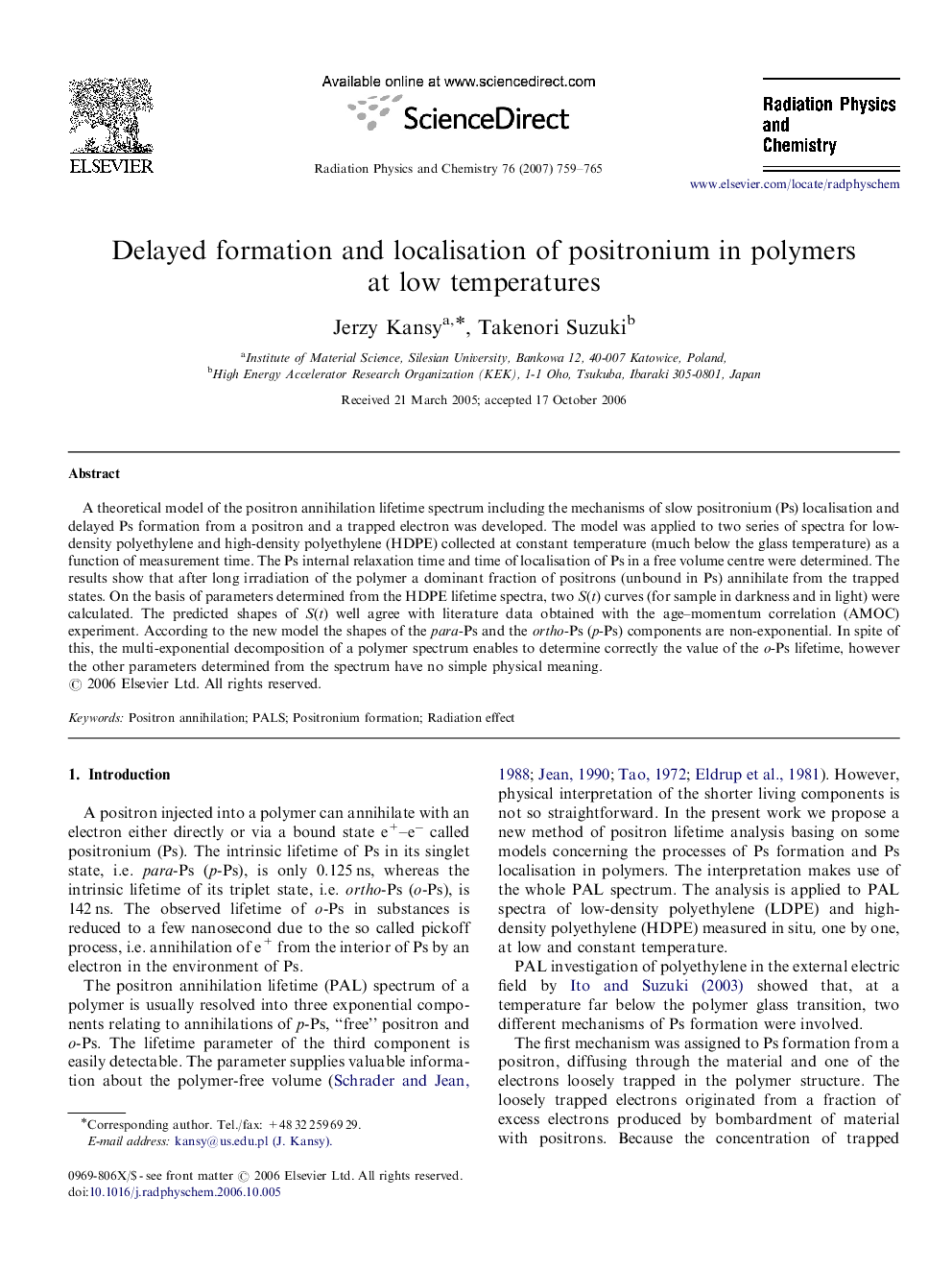| Article ID | Journal | Published Year | Pages | File Type |
|---|---|---|---|---|
| 1892234 | Radiation Physics and Chemistry | 2007 | 7 Pages |
Abstract
A theoretical model of the positron annihilation lifetime spectrum including the mechanisms of slow positronium (Ps) localisation and delayed Ps formation from a positron and a trapped electron was developed. The model was applied to two series of spectra for low-density polyethylene and high-density polyethylene (HDPE) collected at constant temperature (much below the glass temperature) as a function of measurement time. The Ps internal relaxation time and time of localisation of Ps in a free volume centre were determined. The results show that after long irradiation of the polymer a dominant fraction of positrons (unbound in Ps) annihilate from the trapped states. On the basis of parameters determined from the HDPE lifetime spectra, two S(t) curves (for sample in darkness and in light) were calculated. The predicted shapes of S(t) well agree with literature data obtained with the age-momentum correlation (AMOC) experiment. According to the new model the shapes of the para-Ps and the ortho-Ps (p-Ps) components are non-exponential. In spite of this, the multi-exponential decomposition of a polymer spectrum enables to determine correctly the value of the o-Ps lifetime, however the other parameters determined from the spectrum have no simple physical meaning.
Related Topics
Physical Sciences and Engineering
Physics and Astronomy
Radiation
Authors
Jerzy Kansy, Takenori Suzuki,
